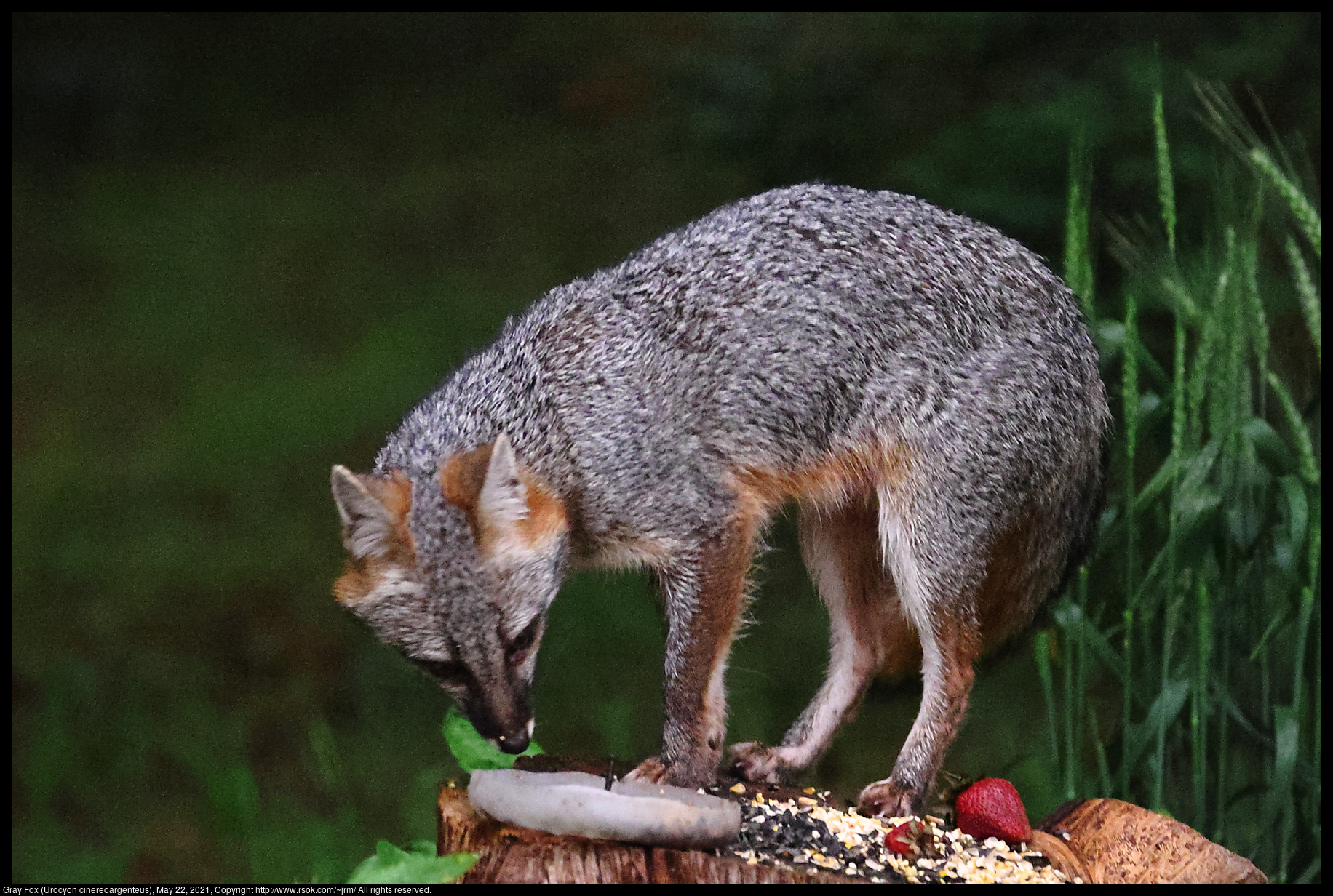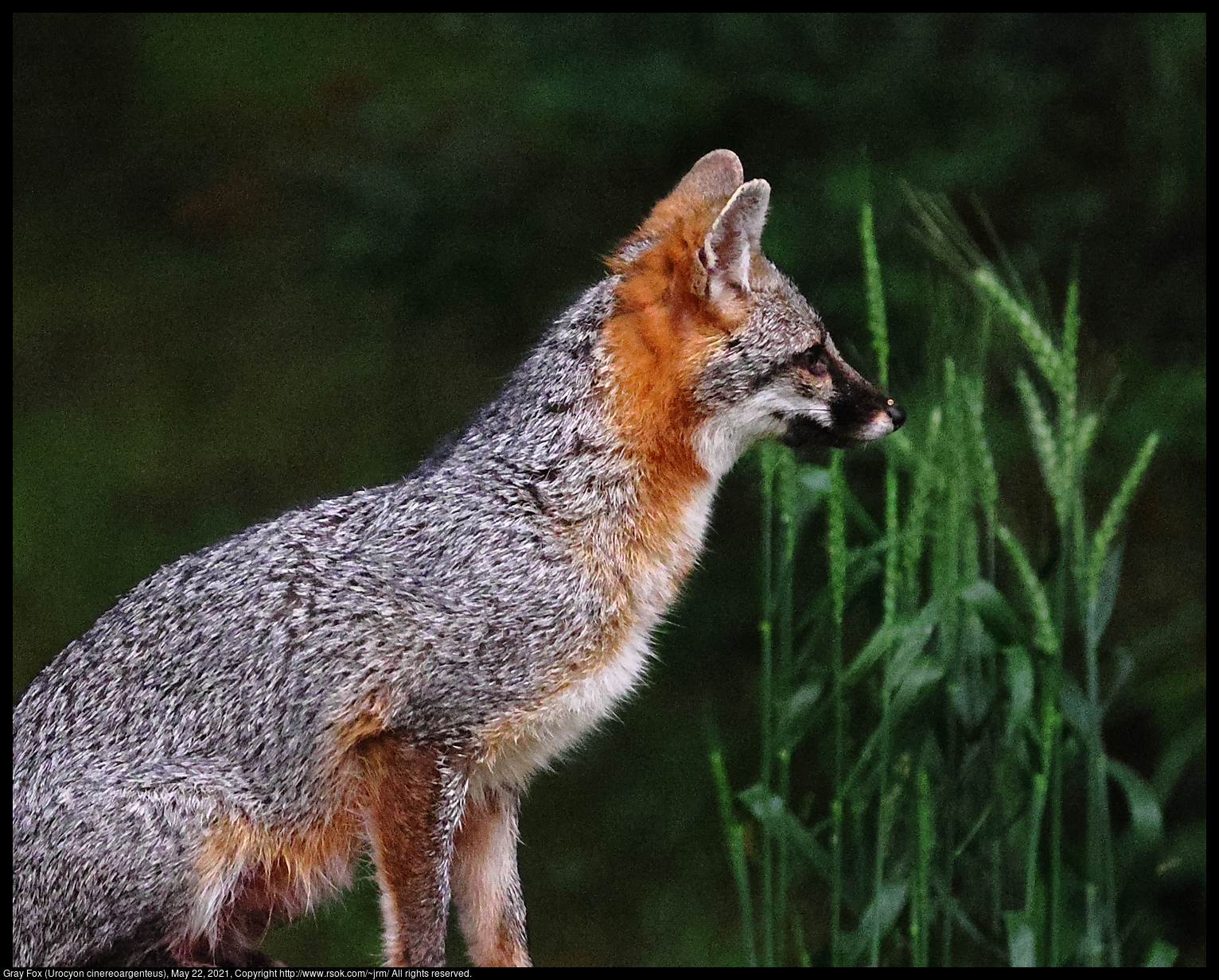- Canon Community
- Discussions & Help
- General Discussion
- General Discussion
- Re: ISO and downsampling
- Subscribe to RSS Feed
- Mark Topic as New
- Mark Topic as Read
- Float this Topic for Current User
- Bookmark
- Subscribe
- Mute
- Printer Friendly Page
ISO and downsampling
- Mark as New
- Bookmark
- Subscribe
- Mute
- Subscribe to RSS Feed
- Permalink
- Report Inappropriate Content
06-21-2021 05:45 PM
- Mark as New
- Bookmark
- Subscribe
- Mute
- Subscribe to RSS Feed
- Permalink
- Report Inappropriate Content
06-22-2021 12:23 PM - edited 06-22-2021 12:30 PM
Since the noise from high ISO seems to mostly be extreme values when compared to surrounding pixels, a median filter will make the noise more like the surrounding pixels which makes the noise less visible, but also blurs the image. Down sample and sharpen after a median filter will result in a lower resolution image that sometimes will look better than the higher resolution original. If a higer resolution image is needed, then this will not be useful, but if a lower resolution image can be used then it is worth trying. Gimp or graphicsmagick will do a median filter and resample.
Here is a down sampled noisy 25600
ISO image: https://www.rsok.com/~jrm/2021May26_birds_and_cats/2021may22_fox_IMG_1312c.html
I used graphicsmagick on a Debian Linux computer to do the downsample after converting the raw CR3 file to JPEG using DPP on an iMac. DPP did a lot of noise reduction leaving a very soft image but did well at preserving colors. The downsampling took an unusuable fuzzy and noisy image and changed it into an interesting but not perfect images of a fox eating bird seed, grape jelly, and a strawberry. Illumination was a porch light and the photo was made from inside my house though a double pane window which further distorted and softened the image. Down sampling also made some of the motion blur from the slow shutter speed and the fox moving less obvious.
The graphicsmagick command line used was (extra quotes around ':' to keep it from turning into emoticon):
gm convert -verbose IMG_1313c.JPG -resize "37.5%" -unsharp 0x1 -mattecolor black -frame 16x16 -font helvetica -fill white -draw "text 4,1228 'Gray Fox (Urocyon cinereoargenteus), May 22, 2021, Copyright http://www.rsok.com/~jrm/ All rights reserved.'" -define 'jpeg:dct-method=float,jpeg':'optimize-coding=true' -interlace line -quality 97 2021may22_fox_IMG_1313c.jpg
| F Number | 5.0 |
| ISO | 25600 |
| Shutter Speed Value | 1/83 |
| Focal Length | 286.0 mm |
| Focus Distance Upper | 10.47 m |
| Focus Distance Lower | 8.99 m |
| Lens Model | EF100-400mm f/4.5-5.6L IS II USM |

https://www.rsok.com/~jrm/
- Mark as New
- Bookmark
- Subscribe
- Mute
- Subscribe to RSS Feed
- Permalink
- Report Inappropriate Content
06-22-2021 05:12 PM
Kinda looks like an over use of the clarity slider.
EOS 1DX and 1D Mk IV and less lenses then before!
- Mark as New
- Bookmark
- Subscribe
- Mute
- Subscribe to RSS Feed
- Permalink
- Report Inappropriate Content
06-22-2021 05:55 PM
Clarity slider was at 2.
Unsharp mask was 2.0,4.0,4.0 with additional unsharp mask applied after down sampling.
Digital Lens optimization was at 40.8.
Noise reduction was at 12.0 for both Luminance and Chrominance.
Setting Clarity slider to 0 instead of 2 makes very little difference. The image was very soft because of 25600 ISO, noise reduction, motion by the fox, slow shutter speed, and dual pane window glass with reflections. The point was to show that downsampling can be useful for rescuing a photo made under difficult conditions.
The Fox moved less and posed better in this one: 
@ebiggs1 wrote:Kinda looks like an over use of the clarity slider.
https://www.rsok.com/~jrm/
- Mark as New
- Bookmark
- Subscribe
- Mute
- Subscribe to RSS Feed
- Permalink
- Report Inappropriate Content
06-23-2021 12:30 PM
"Clarity slider was at 2."
I understand. I figured it was set fairly low. I merely remarked that I think you could get the same appearing photo with the clarity slide set pretty high. In photography there is no free lunch. You always give to get.
Many, many ways to achieve the end result.
EOS 1DX and 1D Mk IV and less lenses then before!
- Mark as New
- Bookmark
- Subscribe
- Mute
- Subscribe to RSS Feed
- Permalink
- Report Inappropriate Content
06-22-2021 05:24 PM
The graphicsmagick command line used was (extra quotes around ':' to keep it from turning into emoticon):
gm convert -verbose IMG_1313c.JPG -resize "37.5%" -unsharp 0x1 -mattecolor black -frame 16x16 -font helvetica -fill white -draw "text 4,1228 'Gray Fox (Urocyon cinereoargenteus), May 22, 2021, Copyright http://www.rsok.com/~jrm/ All rights reserved.'" -define 'jpeg:dct-method=float,jpeg':'optimize-coding=true' -interlace line -quality 97 2021may22_fox_IMG_1313c.jpg
| F Number | 5.0 |
| ISO | 25600 |
| Shutter Speed Value | 1/83 |
| Focal Length | 286.0 mm |
| Focus Distance Upper | 10.47 m |
| Focus Distance Lower | 8.99 m |
| Lens Model | EF100-400mm f/4.5-5.6L IS II USM |
-----------------------------------------------------------
I never new that 1/83 shutter speeds were possible with a Canon camera body. Those settings are recipe for a poor image.
"The right mouse button is your friend."
- Mark as New
- Bookmark
- Subscribe
- Mute
- Subscribe to RSS Feed
- Permalink
- Report Inappropriate Content
06-22-2021 05:31 PM
I tought them odd too. But it did produce a nice photo. However, I believe I could do something similar with the clarity slider in LR.
EOS 1DX and 1D Mk IV and less lenses then before!
- Mark as New
- Bookmark
- Subscribe
- Mute
- Subscribe to RSS Feed
- Permalink
- Report Inappropriate Content
06-22-2021 06:11 PM
It was aperture priority and auto shutter speed and I had guessed that 25600 was the highest ISO I could get by with. So far as I know, with aperture priority the shutter speed might be set automatically to any arbitrary number. The fox came while we were watching television and only stayed a couple minutes. The porch light was on, but else it was completely dark at the tree stump where I feed birds. I went into the other room to get my camera and was able to return without scaring the fox. The photo was made through double pane window glass which provided distortion and reflections. The point of posting was to demonstrate that down sampling can rescue a photo made under difficult conditions. The original question was about downsampling and high ISO noise and not about making a photo under optimal conditions so far as I can remember.
Maybe if I had paid my foxy model better I could have gotten a studio shot with proper lighting 🙂 The only pay was bird seed and fruit on a tree stump.
"Measured EV : 3.12Measured EV 2 : -16.5" from Exif data.
@Waddizzle wrote:
-----------------------------------------------------------
I never new that 1/83 shutter speeds were possible with a Canon camera body. Those settings are recipe for a poor image.
https://www.rsok.com/~jrm/
- Mark as New
- Bookmark
- Subscribe
- Mute
- Subscribe to RSS Feed
- Permalink
- Report Inappropriate Content
06-23-2021 12:32 PM
"... bird seed and fruit on a tree stump."
Perhaps I should have said there is no free lunch, ... most of the time! ![]()
EOS 1DX and 1D Mk IV and less lenses then before!
- Mark as New
- Bookmark
- Subscribe
- Mute
- Subscribe to RSS Feed
- Permalink
- Report Inappropriate Content
06-23-2021 12:38 PM
"I used graphicsmagick on a Debian Linux computer to do the downsample after converting the raw CR3 file to JPEG using DPP ..."
You may as well be talking Chinese. I use and have never really used anything else besides Photoshop and Lightroom. I do have DPP4 installed on my Windows 10 computer but rarely use it.
EOS 1DX and 1D Mk IV and less lenses then before!
- Mark as New
- Bookmark
- Subscribe
- Mute
- Subscribe to RSS Feed
- Permalink
- Report Inappropriate Content
06-23-2021 04:26 PM
I think that the "Digital Lens Optimization" in DPP is worth it if one is using both a Canon lens and body. Else, I would likely use the free rawtherapee for raw development. I frequently use gimp and graphicsmagick and exiftool. I no longer use any Adobe or Microsoft software. I had heard that either lightroom or photoshop is able to do something similar to a Richardson/Lucy deconvolution to remove diffraction blur. I like the way DPP does this, especially for small aperture images. Since I have retired, I almost entirely am able to avoid using Windows. I have written PC BIOS, embedded firmware, RADAR algorithms, and modeling of chemical accidents. I know about sensor data and algorithms. All sorts of sensors can produce noisy data.
Now that I am retired, I am trying to learn photography.
@ebiggs1 wrote:"I used graphicsmagick on a Debian Linux computer to do the downsample after converting the raw CR3 file to JPEG using DPP ..."
You may as well be talking Chinese. I use and have never really used anything else besides Photoshop and Lightroom. I do have DPP4 installed on my Windows 10 computer but rarely use it.
https://www.rsok.com/~jrm/
04/16/2024: New firmware updates are available.
RF100-300mm F2.8 L IS USM - Version 1.0.6
RF400mm F2.8 L IS USM - Version 1.0.6
RF600mm F4 L IS USM - Version 1.0.6
RF800mm F5.6 L IS USM - Version 1.0.4
RF1200mm F8 L IS USM - Version 1.0.4
03/27/2024: RF LENS WORLD Launched!
03/26/2024: New firmware updates are available.
EOS 1DX Mark III - Version 1.9.0
03/22/2024: Canon Learning Center | Photographing the Total Solar Eclipse
02/29/2024: New software version 2.1 available for EOS WEBCAM UTILITY PRO
02/01/2024: New firmware version 1.1.0.1 is available for EOS C500 Mark II
12/05/2023: New firmware updates are available.
EOS R6 Mark II - Version 1.3.0
11/13/2023: Community Enhancements Announced
09/26/2023: New firmware version 1.4.0 is available for CN-E45-135mm T 2.4 L F
08/18/2023: Canon EOS R5 C training series is released.
07/31/2023: New firmware updates are available.
06/30/2023: New firmware version 1.0.5.1 is available for EOS-R5 C
Canon U.S.A Inc. All Rights Reserved. Reproduction in whole or part without permission is prohibited.

